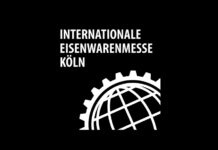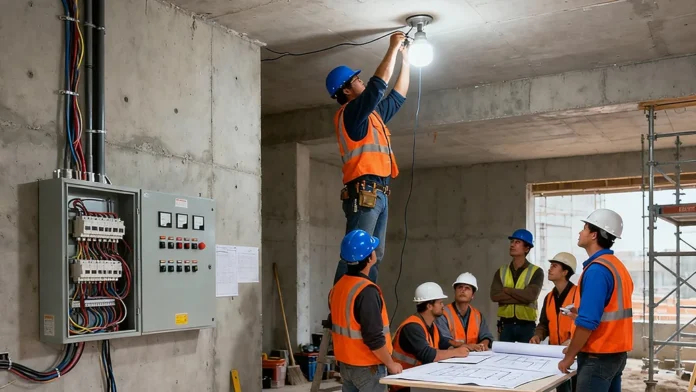Why Lighting Designs Fail During Construction and How to Prevent it
The gap between lighting design intent and final installation outcomes represents one of the most persistent challenges in contemporary construction projects. Lighting design failures construction scenarios often emerge from a complex interplay of communication breakdowns, technical misunderstandings, budget constraints, and coordination issues that can transform carefully crafted design visions into disappointing realities that fail to meet performance expectations or user needs.
Common Causes of Design Intent Loss
The translation of lighting design concepts from design documentation to physical installation involves numerous handoffs between different project stakeholders, each with their own priorities, constraints, and understanding of the project requirements. These transitions create multiple opportunities for design intent to become diluted or lost entirely as projects progress through various phases.
Design documentation often fails to adequately communicate the subtleties of lighting design intent, particularly regarding the experiential qualities that designers seek to create. While technical specifications may accurately describe equipment requirements and installation parameters, they often struggle to convey the atmospheric and functional objectives that drive design decisions.
Value engineering processes frequently target lighting systems as opportunities for cost reduction, often without full understanding of how proposed changes will impact overall design performance. These modifications can fundamentally alter lighting system capabilities while appearing to maintain basic functional requirements, leading to installations that meet minimum specifications while failing to achieve intended design outcomes.
Communication and Documentation Challenges
Effective lighting design implementation requires clear communication channels between designers, contractors, and commissioning agents throughout the construction process. Lighting design failures construction projects often trace back to inadequate communication protocols that fail to maintain design intent visibility as projects progress through construction phases.
Technical drawing standards for lighting systems vary significantly between different project types and geographic regions, creating opportunities for misinterpretation when project teams include members with different professional backgrounds or experience levels. Standardized documentation approaches help reduce these risks while ensuring that critical design information remains accessible to all project stakeholders.
The increasing complexity of modern lighting systems requires more sophisticated documentation approaches that address not only equipment specifications but also control system programming, scene settings, and performance verification procedures. Traditional lighting plans and specifications may prove inadequate for projects incorporating advanced control systems or specialized performance requirements.
Budget Constraints and Value Engineering Impacts
Budget pressures during construction phases often force lighting system modifications that compromise design intent while appearing to maintain basic functional requirements. Understanding how to prioritize lighting system elements helps project teams make informed decisions that preserve critical design objectives even when facing financial constraints.
Alternative product specification can maintain design performance while addressing budget concerns, but requires careful evaluation of how substitutions will impact overall system performance and installation requirements. Successful value engineering for lighting systems focuses on optimizing cost-effectiveness rather than simply reducing initial costs without regard for long-term implications.
The total cost of ownership considerations for lighting systems extend far beyond initial installation costs to encompass energy consumption, maintenance requirements, and lifecycle replacement needs. Design teams that can articulate these broader cost implications are better positioned to defend design decisions against short-sighted cost reduction efforts.
Technical Coordination and Installation Issues
Lighting system installation requires careful coordination with other building systems including electrical, HVAC, architectural finishes, and control systems. Poor coordination between trades can result in conflicts that force field modifications that compromise lighting design intent while creating additional costs and schedule delays.
Electrical system capacity and distribution requirements for modern lighting systems often exceed traditional standards, particularly for projects incorporating LED systems with significant control system requirements. Early coordination between lighting designers and electrical engineers helps identify potential capacity issues before they become construction problems.
Control system installation and programming represents a frequent source of lighting design failures construction teams encounter, particularly when projects involve sophisticated scene control or automated operation requirements. The complexity of modern lighting control systems requires specialized expertise that may not be readily available in all construction markets.
Quality Control and Commissioning Deficiencies
Comprehensive commissioning procedures are essential for verifying that lighting installations achieve intended design performance, yet many projects allocate insufficient time and resources to proper system verification. Without thorough commissioning, even correctly installed systems may fail to operate as intended due to programming errors or configuration issues.
Performance verification procedures must address both quantitative metrics such as illumination levels and qualitative aspects such as visual comfort and aesthetic achievement. Standard commissioning approaches often focus primarily on basic system operation while overlooking the experiential qualities that define successful lighting design implementation.
Documentation of commissioning results provides valuable information for facility management while creating accountability for system performance that extends beyond basic installation completion. Comprehensive commissioning records support both immediate troubleshooting needs and long-term system optimization efforts.
Field Modification and Change Management
Construction projects inevitably encounter field conditions that differ from design assumptions, requiring modifications that can impact lighting system performance. Effective change management procedures ensure that necessary modifications maintain design intent while addressing practical construction requirements.
Emergency field modifications often occur under time pressure that doesn’t allow for comprehensive design review, creating risks that design intent will be compromised in favor of expedient solutions. Establishing clear protocols for design team consultation during field modification situations helps maintain design quality while addressing construction schedule pressures.
The cumulative impact of multiple small modifications can significantly alter lighting system performance even when individual changes appear minor. Regular design team review of proposed modifications helps identify potential cumulative impacts before they compromise overall design performance.
Preventive Design Strategies
Robust lighting design documentation that addresses both technical requirements and experiential objectives helps construction teams understand design intent while providing clear guidance for field decision-making. Design documentation should anticipate common construction challenges while providing flexible solutions that maintain design performance under varying conditions.
Early contractor engagement in the design development process provides opportunities to identify potential construction challenges before they impact project schedules and budgets. Contractor input during design phases can help optimize designs for constructability while maintaining performance objectives and cost-effectiveness.
Mock-up installations allow project teams to verify design performance and resolve potential issues before full-scale installation begins. While mock-ups require additional time and cost during design phases, they often prevent more significant problems during construction while providing opportunities to refine installation procedures.
Technology and System Integration Solutions
Modern lighting control systems offer capabilities that can help maintain design performance even when field conditions require modifications to planned installations. Flexible control system programming can often compensate for minor installation variations while maintaining intended lighting effects and operational characteristics.
Wireless control technologies provide installation flexibility that can help address field coordination challenges while reducing installation costs and complexity. These systems offer opportunities to maintain sophisticated control capabilities even when traditional wired control installation becomes problematic due to field conditions.
Remote monitoring and diagnostic capabilities built into modern lighting systems enable ongoing performance verification that helps identify and address issues before they become significant problems. These capabilities support both initial commissioning efforts and long-term system maintenance requirements.
Industry Best Practices and Standards
Professional industry standards for lighting design documentation and construction practices provide frameworks that help reduce the likelihood of design implementation failures while establishing clear expectations for all project participants. Adherence to established standards creates consistency that supports successful project outcomes.
Training and certification programs for lighting installation professionals help ensure that construction teams possess the knowledge and skills necessary to implement sophisticated lighting designs successfully. Industry investment in professional development directly supports improved construction outcomes and design intent achievement.
Collaborative project delivery methods that maintain designer involvement throughout construction phases help identify and resolve potential issues before they compromise design intent. These approaches require additional coordination effort but often result in superior project outcomes and greater stakeholder satisfaction.
Long-term Performance and Maintenance Considerations
Successful lighting design implementation must consider long-term performance requirements and maintenance capabilities that will affect system operation throughout its lifecycle. Systems that are difficult to maintain or require specialized expertise for routine operations may fail to achieve intended performance levels regardless of initial installation quality.
Training for facility maintenance staff ensures that lighting systems continue to operate as intended throughout their service life while supporting ongoing optimization efforts that can enhance performance over time. Without proper training, even well-designed and installed systems may deteriorate in performance due to inadequate maintenance practices.
Performance monitoring and optimization procedures built into facility management practices help identify emerging issues while supporting system modifications that enhance performance over time. These practices transform lighting systems from static installations into dynamic tools that continue to serve evolving building needs.
The prevention of lighting design failures construction projects requires comprehensive attention to communication, coordination, quality control, and long-term performance considerations. The most successful projects are those that maintain focus on design intent throughout all project phases while remaining flexible enough to address the practical challenges that inevitably emerge during construction implementation.































